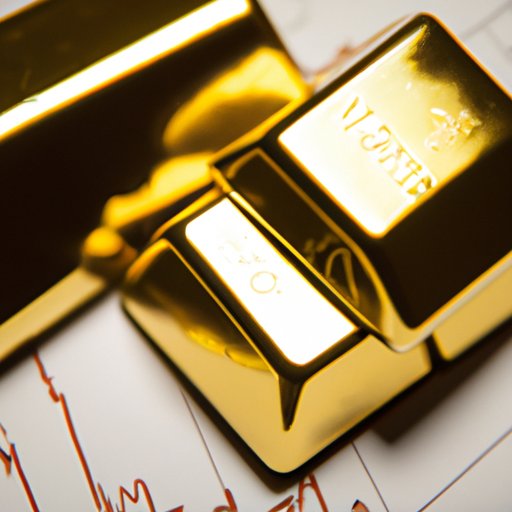Introduction
Gold has been prized for its beauty, value, and rarity since ancient times. Today, it is still a coveted commodity that is used for jewelry, industrial applications, and as an investment. But how much gold is there in the world? This article takes a look at the global gold supply, from its history to modern-day production and investments.

A Historical Look at the Global Gold Supply
In ancient times, humans were drawn to the glitter of gold. Precious metals such as gold and silver were mined and used to create coins, jewelry, and other objects. As civilizations rose and fell, gold was often held by rulers and used to denote wealth and power. In the 19th century, gold rushes around the world led to a surge in gold production, particularly in the United States and Australia.
The rise of central banks in the 20th century further increased the amount of gold held in reserve. Central banks began to purchase large amounts of gold to back their currencies, which resulted in a sharp increase in the total amount of gold held in reserve. This trend continued until the 1970s, when the U.S. ended the gold standard and other countries followed suit.
Gold Mining: How Much Gold is Being Discovered?
Modern gold mining is a complex process that involves a variety of techniques and technologies. Gold is typically found in low-grade ore deposits and must be extracted using various methods, including open-pit mining, underground mining, panning, and dredging. The amount of gold produced each year depends on a variety of factors, such as the price of gold, the availability of capital, and the cost of labor and equipment.
Gold is mined in many parts of the world, including South Africa, Australia, the United States, Canada, China, Peru, and Russia. These countries account for the majority of gold production, although smaller amounts are mined in other countries as well.
How Much Gold is Held by Central Banks?
Central banks play an important role in the global gold supply. Governments and central banks purchase large amounts of gold to back their currencies and maintain stability in the financial system. Central banks also use gold to diversify their portfolios and hedge against economic and political uncertainty.
Today, the largest holders of gold are the United States, Germany, Italy, France, and China. Together, these five countries hold more than half of the world’s official gold reserves. Other major holders include India, Russia, Japan, and Switzerland.
The Impact of Gold on International Economies
The influence of gold on international economies is hard to overstate. Gold is seen as a safe-haven asset and its price can have a significant impact on currency values. Gold is also used in international trade and investment, and it can affect inflation levels in countries where it is widely used.
Gold has been used as a form of currency since ancient times, and it continues to play an important role in the global economy today. Countries with large gold reserves often have more stable currencies and are better positioned to weather economic or political turmoil.

Analyzing Global Gold Reserves and Investments
To get a better understanding of the global gold supply, it is important to analyze both demand and supply. Demand for gold comes from a variety of sources, including central banks, jewelry makers, and investors. Supply, meanwhile, comes from gold mining operations and recycled gold.
Gold prices tend to fluctuate depending on demand and supply. In recent years, investment in gold has been on the rise, with many investors seeking to protect their wealth from market volatility and economic uncertainty. While gold can be a good way to diversify one’s portfolio, it is important to consider the risks associated with investing in gold before making any decisions.
Conclusion
Gold has long been prized for its beauty and value, and its importance in the global economy is undeniable. From ancient times to modern day, the amount of gold in the world has grown steadily. Today, gold is mined in many parts of the world and held in reserve by central banks. Its influence on currency values, trade, and investment cannot be overstated.
When considering gold investments, it is important to understand the global gold supply and analyze demand and supply trends. With careful research and analysis, gold can be a valuable addition to any investor’s portfolio.


